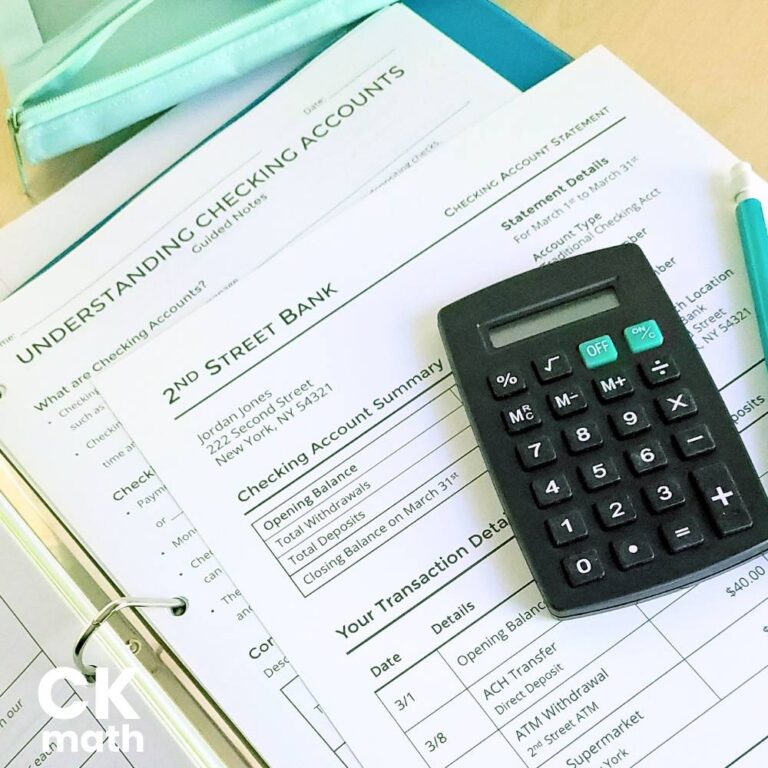Are your junior high, middle, or high school students struggling with basic math skills they should remember from elementary school? If you’re looking for something new to try to help your older students become more fluent with math facts, mental math, and math vocabulary, I have a couple of quick, easy ideas you can implement daily in your class that will help. These will work great in regular math class, but also make great additions to help build math skills in your intervention classes as well.
Why teach number sense?
When I first taught middle school math intervention, I found that the majority of my students had a few things in common.
They lacked basic math skills.
They had very little confidence.
And they were always reaching for a calculator.
I made it a goal to work on these things with my students because they were holding them back in their regular math classes.
Unfortunately, I quickly realized there weren’t many resources out there to work on these skills with older students. The resources I found were geared toward younger elementary kids, but I was noticing (and I’m sure you have, too) an increasing number of older students struggling with basic math skills and vocabulary, even in my regular math classes.
Here’s what I came up with to help my students practice their number sense skills consistently without taking up a lot of class time.

Number of the Week
One of the strategies that I found had a big impact on my students’ number sense and math vocabulary was implementing a ‘number of the week.’ I found quite a few of these online for elementary students, but couldn’t find one for older students, so I created my own.
Here’s how it works: Each week, I give students a sheet that contains a number. The sheet then asks students several questions about the number, including place value, operations using mental math, finding factors and multiples, placing the number on a number line, finding percentages using mental math, multiplying and dividing by ten, and more. No calculators allowed, of course!
These sheets spiral back each week by repeating questions while also asking new ones. They also include fractions, decimals, and percentages.
The sheets only take about 10 minutes to complete once a week, but I noticed significant growth in my students’ mental math and vocabulary skills. I also found myself referring back to these sheets constantly when working with students on new content!
You can find my Number of the Week sheets here!

Number Talks
The second strategy I used is also common in elementary schools, but rarely used with older students. Number talks are quick, five-minute conversations that you have with students about a mental math problem.
They’re easy to implement, and my students really enjoyed them. I was originally skeptical that my intervention students would participate, but they actually loved them. It was really great to see students who are usually unwilling to volunteer to explain their thinking in math be the first to raise their hands.
I followed the recommendations of the book Making Number Talks Matter by Cathy Humphreys and Ruth Parker. This book is one of the few out there that provides a number talk strategy for middle and high school students.
I highly recommend purchasing the book and following their process. The other books I found on this topic were mostly geared toward younger students, and I felt like my students might feel like they were being ‘babied’ with those approaches.
You can find the Making Number Talks Matter book on Amazon here.
How I Implemented These Strategies
To avoid taking up too much class time, I used the Number of the Week sheets as bellwork once a week, and then did the number talks the other four days of the week at the beginning of each class.
The number talks take a little longer at the beginning of the year as students get used to them, but once you’ve established the routine, you can do them in about five minutes.
More Ideas
I hope these strategies help improve mental math and number sense skills in your students! If you’re interested in more ideas for teaching secondary math, you can find them here!








